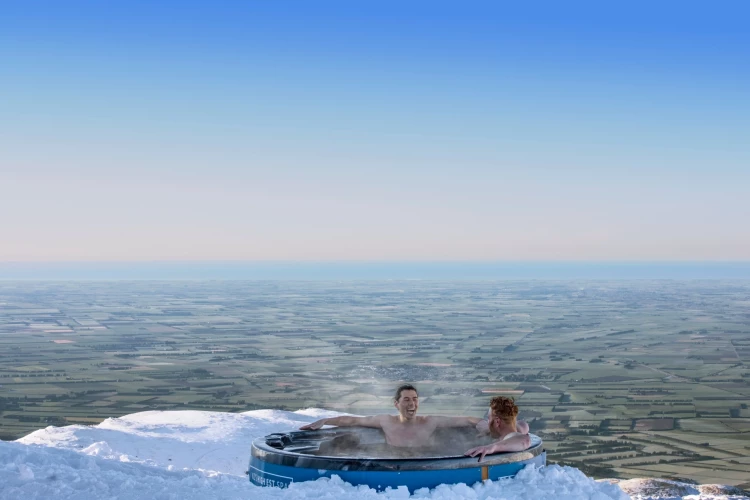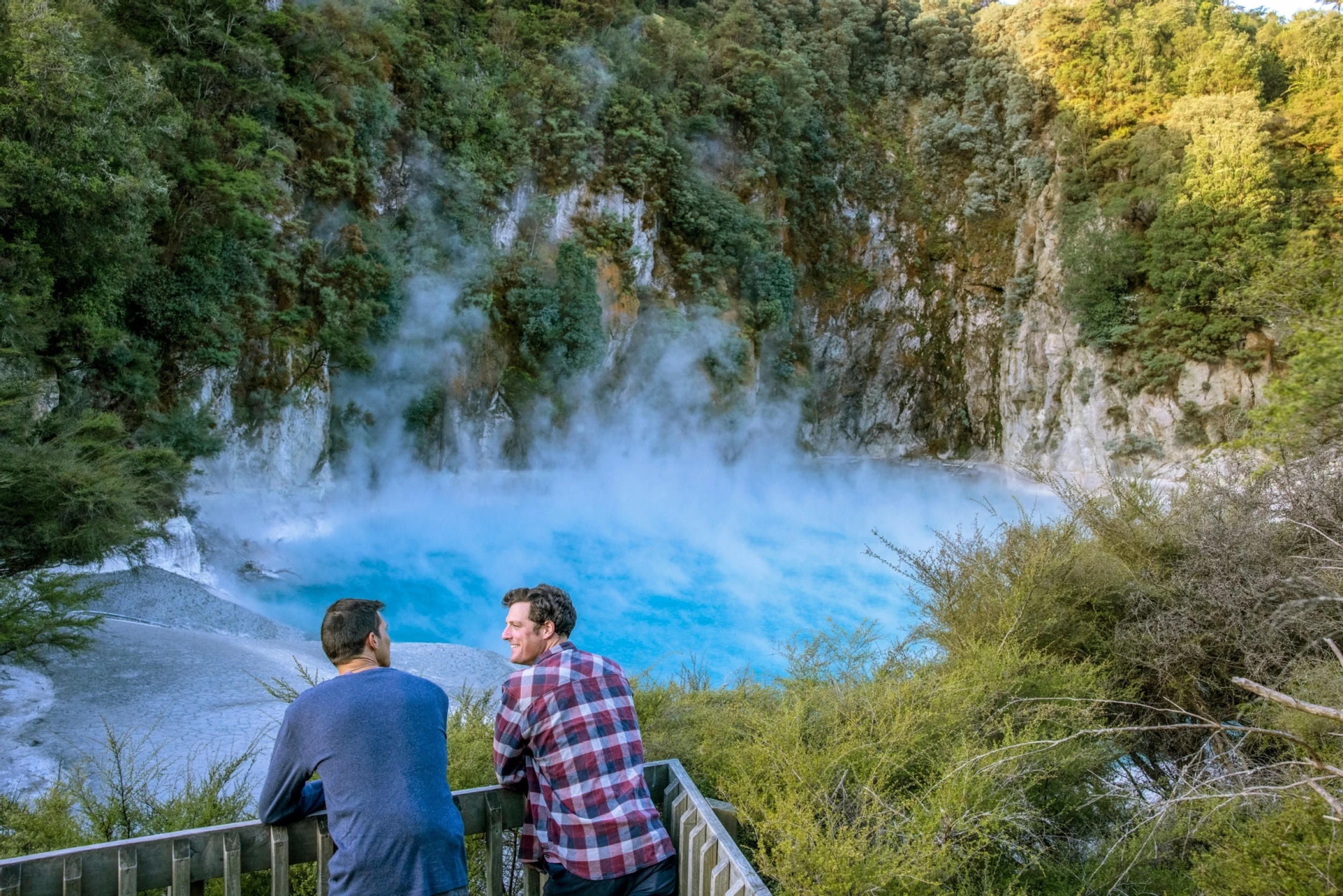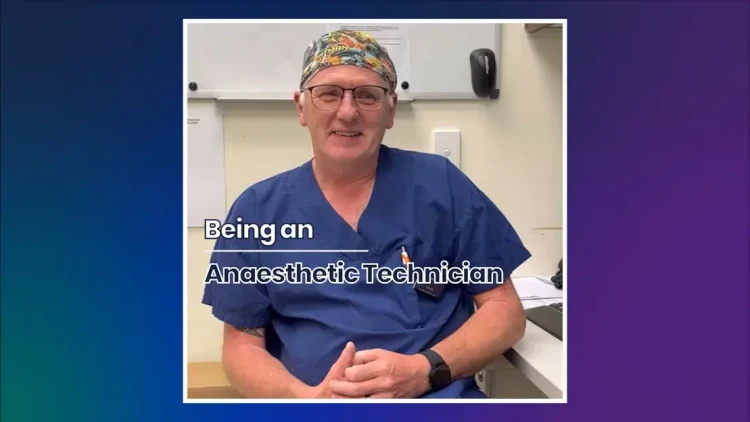- About Health New Zealand
- Locations
- Allied Health
- Midwifery & Nursing
-
Medical Officers
- All Senior Medical Officers (SMOs)
- Anaesthetists
- Dermatologists
- Emergency Medicine Specialists
- GPs & Rural Hospital Doctors
- General Medicine
- Obstetricians & Gynaecologists
- Oncologists
- Paediatricians
- Pain Medicine Specialists
- Pathologists
- Psychiatrists
- Radiologists
- Surgical Specialities
- Resident Medical Officers (RMOs)
- Specialist Teams

Anaesthetic Technicians
New Zealand - Aotearoa offers a broad range of opportunities for Anaesthetic Technicians in a range of environments from fast-paced metropolitan centres to community-focused healthcare in urban, rural and remote settings.
Also known as: Operating Department Practitioners (ODPs) Anaesthetic Technologists, Operating Department Technicians
Photo location: Rotorua, Bay of Plenty - Credit: Miles Holden
About the role
An Anaesthetic Technician or Operating Department Practitioner is part of the Allied Health workforce who performs a patient care role predominantly assisting with the administration and monitoring of anaesthesia. They have an extensive knowledge of anaesthesia techniques, instruments, supplies and technology.
Involved with all aspects of the delivery of a patient's perioperative anaesthetic care, they also play a key role in the emergency resuscitation of patients.
You'll find Anaesthetic Technicians in operating theatre suites but can be found in other areas of clinical practice including emergency departments, intensive care units (ICU) and day surgery clinics.
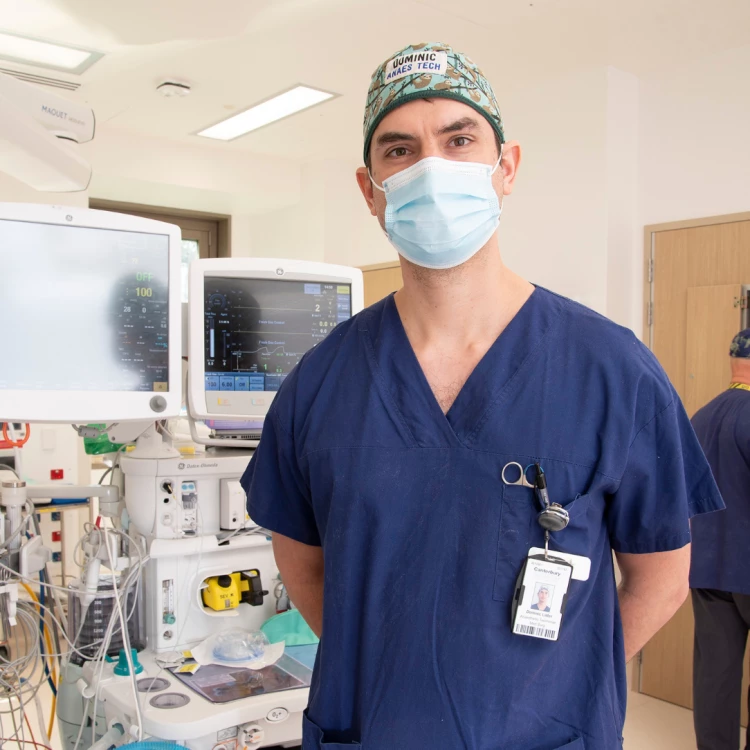
Salary, leave & benefits
Salary
-
Anaesthetic Technicians have a 10-step progression salary scale. Salaries range between NZ$77K – NZ$116K.
-
Designated Anaesthetic Technicians (e.g. Team Leader, Professional Advisor) have a 10-step progression salary scale. Salaries range between NZ$111K – NZ$151K.
-
Overtime rates apply for call-backs.
Allowances
-
Higher duties allowance
-
On-call allowance
Leave
-
4 weeks of paid annual leave (increases to 5 weeks after 5 years of service)
-
Shift employees may receive up to an additional 5 days’ annual leave after 12 months of shift work
-
Minimum of 10 days of paid sick leave per year
-
6–12 months of parental leave, depending on length of service
-
Up to 14 weeks of paid parental leave (provided by the New Zealand Government)
Additional benefits
-
Reimbursement of your professional registration costs
-
Professional indemnity insurance is covered by Health New Zealand
-
20 hours per year for Continuing Professional Development
-
If eligible, at least a 3% superannuation contribution from Health New Zealand
-
12 paid public holidays, plus time in lieu of or an alternative holiday if rostered on
Anaesthetic Technicians' collective agreement
In New Zealand, salary and benefits for some roles are set through collective agreements between unions and employers. The full Anaesthetic Technicians collective agreement is available on the Health New Zealand | Te Whatu Ora website here.
Expanded scopes of practice:
-
There are two existing expanded Scopes of Practice for Anaesthetic Technicians:
-
Post-Anaesthetic Care
-
Peripherally Inserted Central Catheters.
-
Anaesthetic Technicians may practice in these areas on the completion of an accredited training pathway and the approval of the Medical Sciences Council.
New Zealand Anaesthetic Technicians' Society: nzats.co.nz
Roles & responsibilities
Governance & professional standards
-
Work within the scope of practice defined by the Medical Sciences Council of New Zealand.
-
Maintain competence in line with the Council’s updated standards (effective 1 April 2025).
-
Comply with supervision requirements (especially for new graduates).
-
Hold an approved qualification and a current Annual Practising Certificate.
Cultural competency & community engagement
-
Understand and apply Te Tiriti o Waitangi (The Treaty of Waitangi) principles.
-
Engage with Māori and other local communities to support equitable health outcomes.
Preparation & equipment management
-
Check and set up anaesthetic and life support equipment.
-
Clean, disinfect, sterilise and maintain anaesthetic machines and tools.
-
Restock drugs, fluids, airway tools, IV supplies and emergency kits.
Patient interaction & assessment
-
Inform and reassure patients before procedures.
-
Identify medical risks that may complicate anaesthesia.
-
Conduct pre-operative identity and consent checks.
Support during anaesthesia
-
Assist with placement of breathing tubes (e.g. intubation, laryngeal masks).
-
Insert intravenous (IV) lines and support arterial or central line setup.
-
Support anaesthetists with the delivery of local anaesthesia and nerve blocks.
-
Administer IV fluids and monitor drug dosages under supervision.
Monitoring & intraoperative care
-
Monitor vital signs: heart rate, blood pressure, oxygen saturation and temperature.
-
Collect and analyse patient blood samples (e.g. blood gases).
-
Adjust warming or cooling systems to regulate patient temperature.
Post-operative care
-
Remove airway devices and assist in administering reversal agents.
-
Support patient recovery and transfer to post-anaesthesia care units (PACU).
-
Insert and manage IV catheters as part of ongoing care.
Emergency & resuscitation support
-
Respond to emergencies in operating theatres, emergency departments and ICUs.
-
Participate actively in resuscitation and critical care support.
Teaching, leadership & quality improvement
-
Supervise students and junior staff in clinical settings.
-
Participate in peer reviews, appraisals and continuing education.
-
Contribute to audits, risk reporting, service improvement and governance activities.
Administration & interprofessional collaboration
-
Document perioperative activity accurately.
-
Respect patient confidentiality and comply with privacy policies.
-
Communicate effectively with Anaesthetists, surgical teams, ICU, wards and biomedical staff.
Expanded scope & advanced practice
-
Pursue advanced practice options such as post-anaesthetic care and catheter insertion.
-
Complete accredited training programmes for extended clinical roles.
Required qualifications & registration
Anaesthetic Technician Qualification:
-
You must hold an approved qualification in anaesthetic technology. Common pathways include:
-
A Diploma or Bachelor of Health Science (Anaesthetic Technology) from a New Zealand institution (e.g., Auckland University of Technology).
-
An overseas qualification that is assessed as equivalent to New Zealand standards by the MSCNZ.
-
Registration with the MSCNZ:
-
All Anaesthetic Technicians must be registered with the Medical Sciences Council of New Zealand to practice legally.
-
Applicants need to submit proof of their qualifications, personal identification, and evidence of fitness to practice.
Annual Practising Certificate (APC):
-
To practice as an Anaesthetic Technician, you must hold a valid Annual Practising Certificate (APC), which is renewed annually.
-
To maintain the APC, you must:
-
Provide evidence of ongoing competence.
-
Demonstrate participation in Continuing Professional Development (CPD) activities.
-
Information for international candidates
Information for international candidates:
-
Internationally qualified candidates include practitioners who hold a United Kingdom-issued qualification in Anaesthetic Technology and:
-
have 3680 hours or more (2 years full-time equivalent) post-qualification relevant specialised anaesthetic technology experience, and
are registered and in good standing with the Health and Care Professions Council (HCPC).
-
-
Applicants with less than two years' experience can still apply and be assessed by the Council, which may include a Work-Based Assessment in practice.
-
All other overseas qualifications are assessed on a case-by-case basis as to whether or not the holder of that qualification meets the registration requirements of the Council. Qualifications will be assessed against a standard set of criteria approved by the Council. Learn more about how to register.
-
Operating Department Practitioners (ODPs) seeking roles may apply for registration and practice within the boundaries of an Anaesthetic Technician.
Find out more about life in New Zealand
We have a page dedicated to providing information to candidates about our recruitment process, what you need to work in New Zealand and key details about moving here.
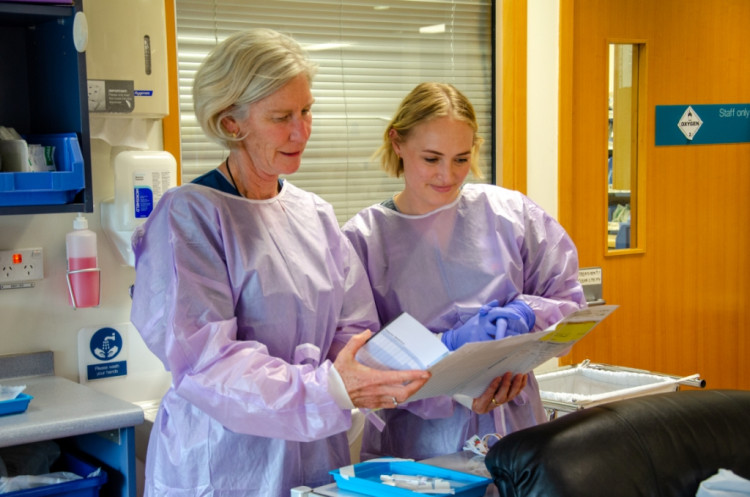
Apply for an Anaesthetic Technician role
Domestically Trained Candidates
If you trained in New Zealand or Australia, search current vacancies with our districts to apply for here:
Internationally Trained Candidates
If you trained outside of New Zealand or Australia, register through our International Recruitment Centre here:

News: change in the scope of practice for Anaesthetic Technicians in New Zealand
Announced in January 2025, this change in the scope of practice for Anaesthetic Technicians in New Zealand provides new opportunities for experienced candidates from the United Kingdom, particularly Operating Department Practitioners (ODPs).

Some Registered Nurses can work as Anaesthetic Assistants in New Zealand
There are pathways for some international Registered Nurses to be able to work in New Zealand as Anaesthetic Assistants.

News: change in the scope of practice for Anaesthetic Technicians in New Zealand
Announced in January 2025, this change in the scope of practice for Anaesthetic Technicians in New Zealand provides new opportunities for experienced candidates from the United Kingdom, particularly Operating Department Practitioners (ODPs).
The updated scope broadens the range of activities and responsibilities Anaesthetic Technicians can undertake, aligning more closely with international roles like the UK’s ODP.
The Medical Sciences Council of New Zealand notes that this evolution reflects the increasing complexity of anaesthetic care and the need for a flexible, highly skilled workforce. It also opens clearer registration pathways for ODPs who meet the relevant competencies, offering a smoother transition into the New Zealand healthcare system.
For UK-trained ODPs, this development offers a significant opportunity to bring their skills and training to a growing and well-supported profession in New Zealand.

Some Registered Nurses can work as Anaesthetic Assistants in New Zealand
There are pathways for those from Australia, the UK and Singapore for Registered Nurses to relocate to New Zealand and work as an Anaesthetic Assistant.
There are qualification and training requirements for each pathway to ensure that overseas RNs meet New Zealand's standards for safe anaesthetic care, either through direct entry or additional training.
Requirements across all countries:
-
All overseas RNs should have at least 12 months of recent experience in anaesthetic assistance.
Australia:
Over 50% of Anaesthetic Assistants in Australia are Registered or Enrolled Nurses, and all courses require experience in specialty areas of peri anaesthesia (anaesthetics and post-anesthetic care units) to obtain the qualification, meaning the skills are transferrable to practice in New Zealand
Training and experience requirements:
-
With a Post-Graduate Qualification in Anaesthetics: Australian RNs with a postgraduate qualification in peri-anaesthesia nursing (e.g., from universities like the University of Technology Sydney or Monash University) are generally well-qualified for the Anaesthetic Assistant role in New Zealand.
-
If you have recent/current practice, you can start employment immediately as an Anaesthetic Assistant without additional training.
-
-
Without Post-Graduate Qualification: Australian RNs with anaesthetic experience but no postgraduate qualification must complete hospital training if you don’t meet recent practice requirements.
-
If you don't have recent experience, hospital training is required before you can practise here.
-
United Kingdom (UK):
Depending on when you gained your qualification, there are different requirements for the training needed to practise in New Zealand.
Training and experience requirements:
-
Registered Nurses trained after 2002 may have pursued post-registration education - you must have competencies equivalent to the Operating Department Practitioner (ODP) curriculum, which is transferrable to Anaesthetic Technicians in New Zealand
-
If these qualifications are not recognised or you lack recent practice, you will need to complete training in a recognised hospital that aligns with New Zealand's standards.
-
-
Registered Nurses who obtained the English National Board (ENB 182) certification before 2002 are likely to have comparable skills to New Zealand's standards.
-
If you have recent/current experience, you can go straight into employment as an Anaesthetic Assistant without additional training.
-
If you lack recent practice, you will need to complete recognised hospital training.
-
Singapore:
Training requirements:
The training of specialty-trained Anesthesia Registered Nurses in Singapore aligns well with the requirements for practicing in New Zealand.
Training is typically a minimum of 6 months guided by a workbook, competency assessments and sign-off by experienced preceptors. Training is enhanced through regular in-service education delivered by Anaesthetists and representatives of specialty anaesthesia equipment suppliers. The job description is equivalent to that of New Zealand Registered Anaesthetic Technicians.
Experience requirements:
-
If you have recent/current experience, you may require some additional education to align with New Zealand standards (such as machine theory, difficult airway management, and ANZCA emergency guidelines), which can be supported by our hospitals.
-
If you lack recent practice, you will need to complete recognised hospital training.
Working at Health New Zealand
'Te Whatu Ora' translates from our indigenous Māori language to 'the weaving of wellness'; which is what we are all about in our holistic delivery of world-class care for the health and wellbeing of the 5 million Kiwis in our communities.
Health New Zealand has an open and non-hierarchical approach to improving outcomes for our patients. Our cross-disciplinary collaborative way of working fosters a positive work environment where all members of our team feel supported and empowered.
Our commitment to you
We are dedicated to building a team that is representative of the communities that we are serving. We are committed to supporting health equity in our communities. Our kaimahi (staff) thrives on the diversity and inclusion of all perspectives and cultures, and we welcome individuals from all backgrounds and lived experiences.
Health New Zealand has programmes and facilities available to both protect and improve our teams’ physical, mental and emotional health and wellbeing. We know that you do your best work when you’re feeling your best, so it’s important to us that this is a priority.



Looking to move to New Zealand to work as an Anaesthetic Technician?
Great news! Anaesthetic Technicians are on Tier 1 of New Zealand's Green List which means you are eligible for a fast-tracked Straight to Residence Visa.
This means you can apply for New Zealand residency before you arrive, provided you have a job offer from an accredited employer, like us!
Explore Aotearoa
New Zealand - Aotearoa has been in the top 5 countries in the Global Peace Index every year since it launched in 2009, and has a broad range of places to call home, from the bustling metropolis of our main centres, to the easy-going vibe of our coastal or rural communities.
Find out more information about what part of our beautiful country is the best fit for you.

Te Tai Tokerau Northland
Population: 194,600
Northland is a beautiful and diverse region of Aotearoa, New Zealand with plenty to offer visitors. Whether you're interested in water sports, historic sites, natural beauty or ancient Kauri trees—Northland has it all!
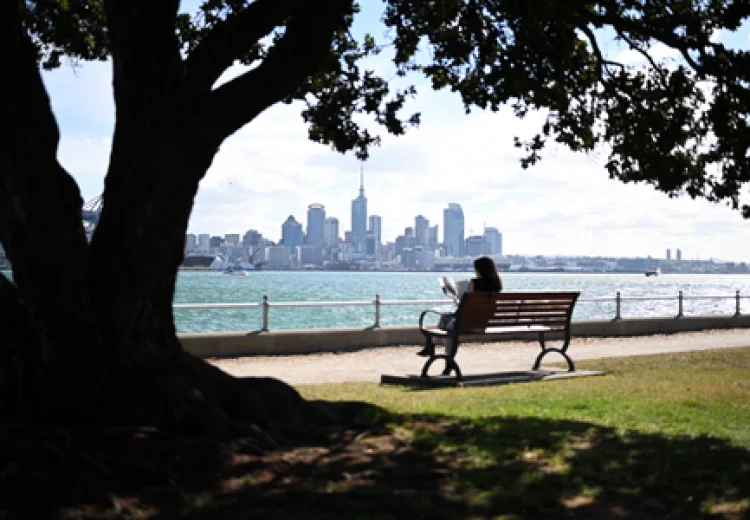
Waitematā
Population: 650,000
Waitematā is the largest and one of the most rapidly growing Districts serving the largest population of all Health New Zealand. Waitematā offers a balanced lifestyle that combines the convenience of city living with the natural beauty and community spirit of suburban life.
Population: 650,000
Waitematā is the largest and one of the most rapidly growing Districts serving the largest population of all Health New Zealand. Waitematā offers a balanced lifestyle that combines the convenience of city living with the natural beauty and community spirit of suburban life.
Population: 650,000
Waitematā is the largest and one of the most rapidly growing Districts serving the largest population of all Health New Zealand. Waitematā offers a balanced lifestyle that combines the convenience of city living with the natural beauty and community spirit of suburban life.
Population: 650,000
Waitematā is the largest and one of the most rapidly growing Districts serving the largest population of all Health New Zealand. Waitematā offers a balanced lifestyle that combines the convenience of city living with the natural beauty and community spirit of suburban life.
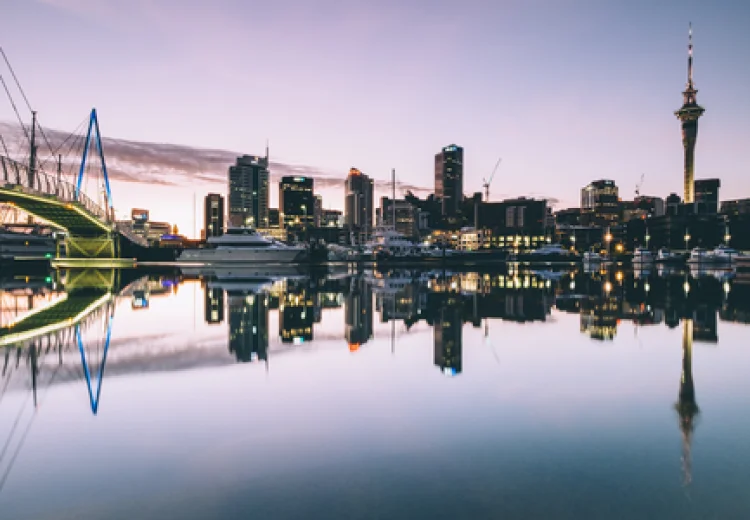
Te Toka Tumai Auckland
Population: 500,000
Auckland the "City of Sails" is Aotearoa New Zealand’s largest city and commercial hub. It’s where metropolitan sophistication meets breathtaking natural beauty. Auckland is filled with a variety of warm and welcoming communities, packed with new places to explore.
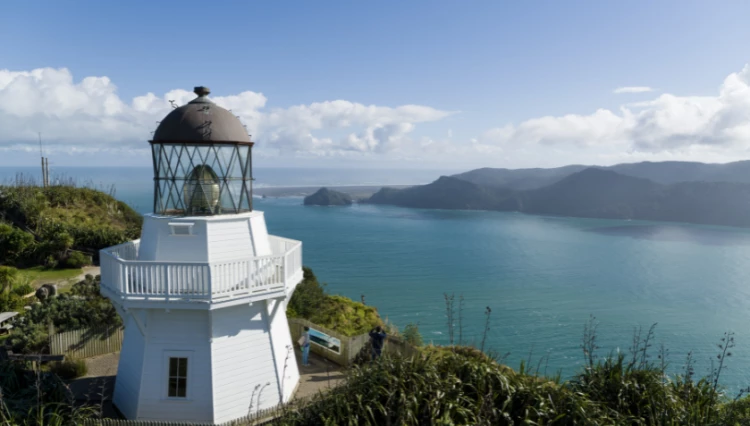
Counties Manukau
Population: 500,000
Counties Manukau is a vibrant place where there's never a dull moment! Living and working here ensures you're always close to amenities, events and nature. You'll never run out of places to visit or things to do.
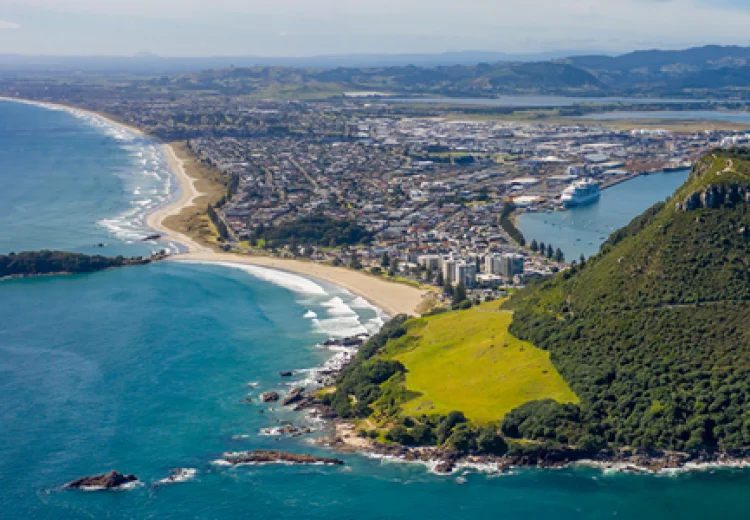
Hauora a Toi Bay of Plenty
Population: 255,110
The Bay of Plenty is a place of beautiful harbours, long surf beaches and an easy-going lifestyle. We showcase the perfect place to explore a wide range of nature-based pursuits – this gives the people of the Bay of Plenty the chance for a better work-life balance.
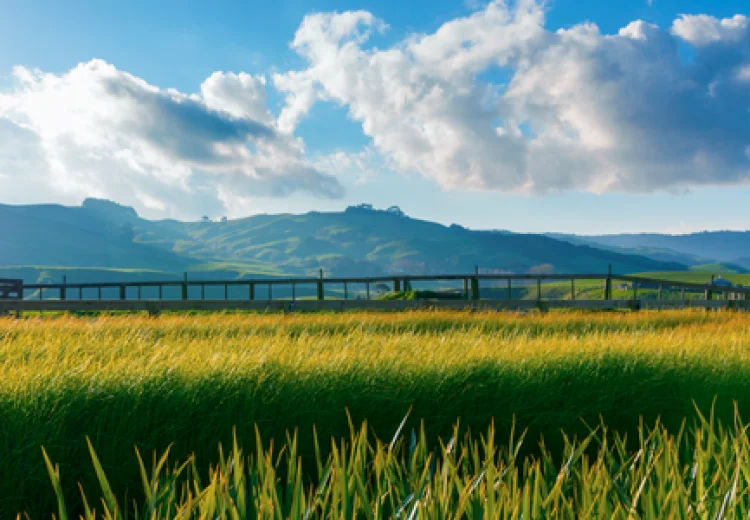
Waikato
Population: 425,000
The Waikato region is known for its natural beauty, rich Māori culture, and agricultural heritage with something to offer visitors of all interests.
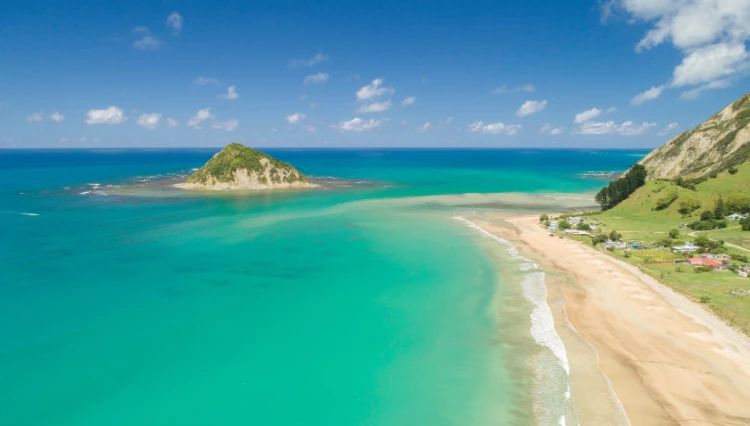
Tairāwhiti Gisborne
Population: 48,000
In family-friendly Tairāwhiti you will experience an easier pace to life that allows you to pause, reflect and enjoy a true work-life balance. Gisborne’s relative isolation is its charm, surrounded by beaches & nature - don't worry though! Larger cities are only a quick flight away.

Lakes
Population: 110,000
The Lakes District is well known for its geothermal activity and natural hot springs. The area is located in the central North Island and is home to many geothermal attractions, such as geysers, hot mud pools, and steam vents. Visitors can also relax in the region's natural hot springs, which are believed to have healing properties.
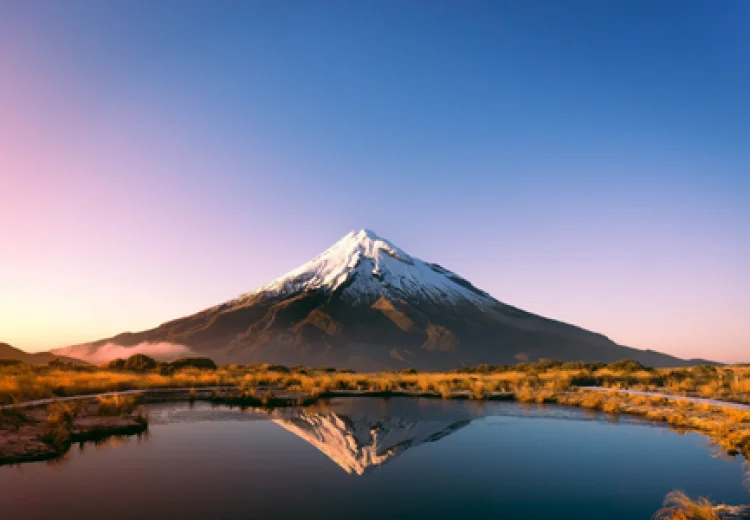
Taranaki
Population: 130,000
Taranaki is a magical place with a majestic mountain at its heart, including the rugged coastline that's world-renowned for its surf. Its residents' love of art and culture, cafes and outdoor living mean it's also fantastic to work—and play!
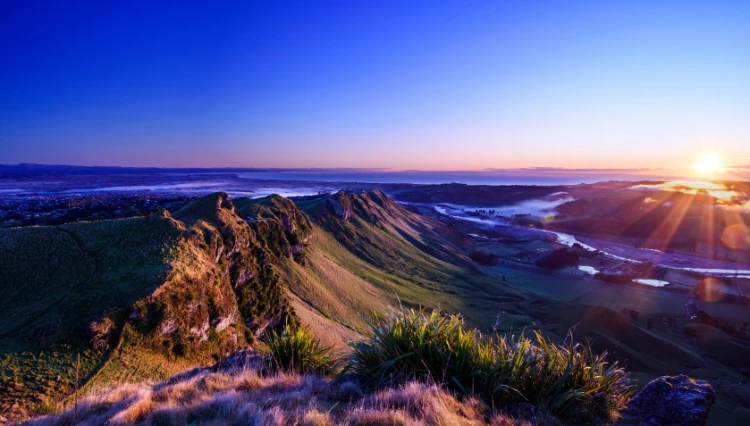
Te Matau a Māui Hawke's Bay
Population: 180,000
Known for its world-class wineries, stunning beaches and temperate climate, Hawke’s Bay boasts a lifestyle that is unmatched. The region is a popular destination for food and wine tourism, hiking, cycling and cultural events such as the annual Art Deco festival.
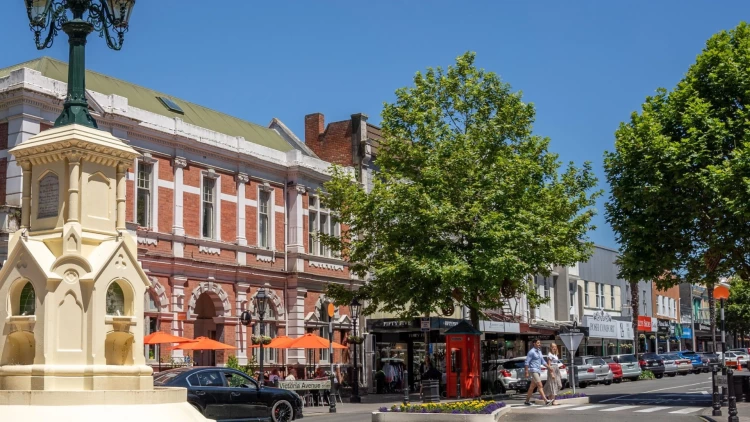
Whanganui
Population: 65,000
Whanganui has something for everyone. Our centrally located region offers access to outdoor activities such as kayaking, skiing, surfing, tramping, cycling, fishing and hunting. Nestled between two snow-capped mountains, on the banks of Whanganui River there is always plenty to do and explore.
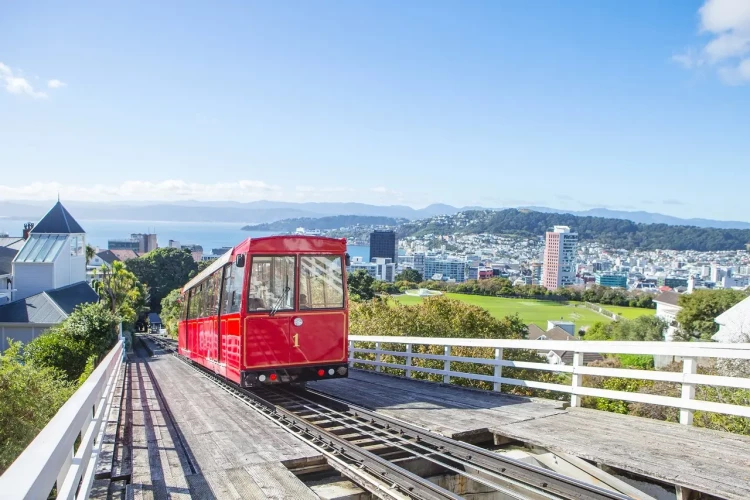
Capital, Coast and Hutt Valley
Population: 445,000
Wellington, the capital city of Aotearoa New Zealand, is a bustling and diverse hub of culture and cosmopolitanism, renowned for its lively cafés, restaurants, and internationally acclaimed sporting and cultural events, all set against the stunning backdrop of a natural harbour. To the north of Wellington lie the regions of Porirua, Kapiti, and Hutt Valley.

Te Pae Hauora o Ruahine o Tararua MidCentral
Population: 190,000
Get the best of both worlds - the perfect blend of rural and city living with the mountains, city and sea at your fingertips.
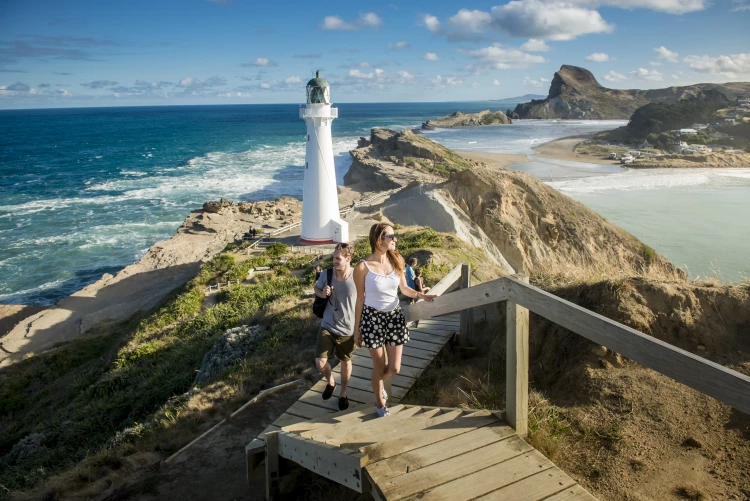
Wairarapa
Population: 48,000
From rugged coastlines, boutique vineyards to lush forests, Wairarapa is a slice of paradise for those who love the outdoors and seek a peaceful environment to recharge after a rewarding day's work.
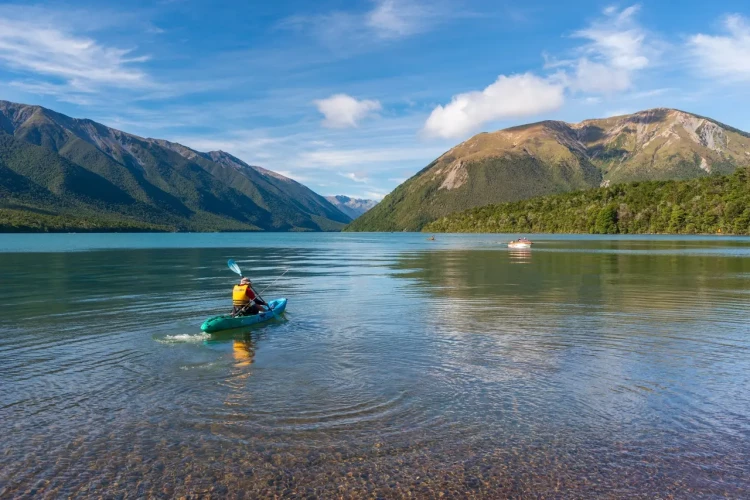
Nelson Marlborough
Population: 150,000
Nelson Marlborough has been dubbed the artistic capital with a thriving urban centre and one of New Zealand's sunniest regions.
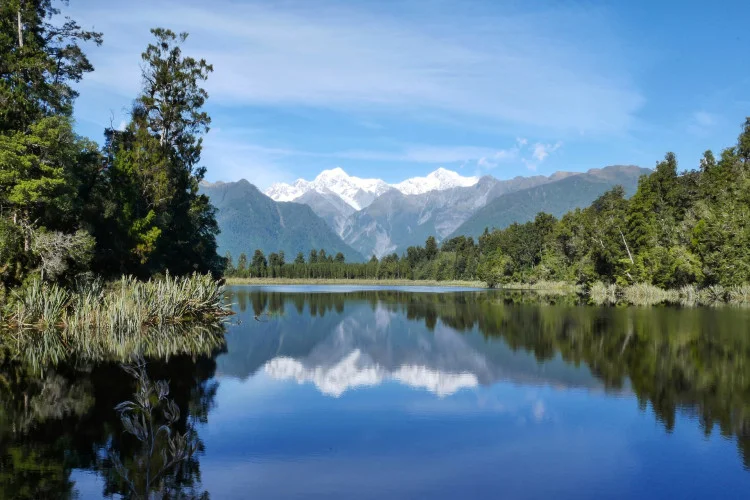
Te Tai o Poutini West Coast
Population: 32,000
Te Tai o Poutini West Coast has views of both the mountain ranges and the ocean! It is an untamed natural wilderness of beautiful rivers and rainforests, glaciers and geological treasures.
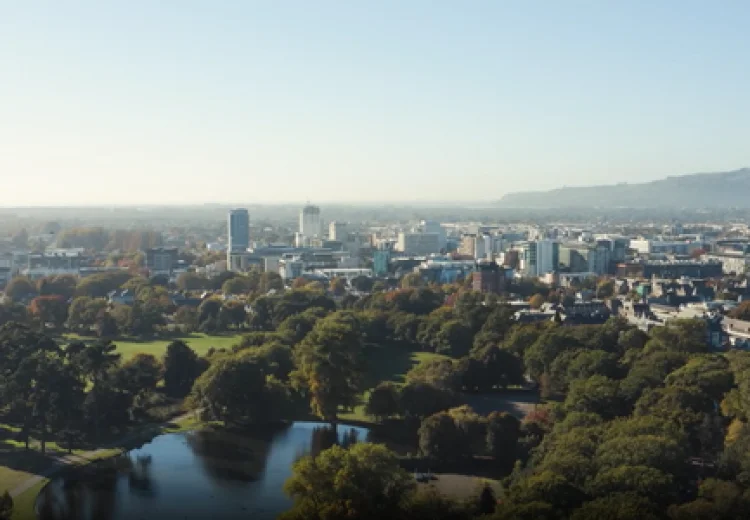
Waitaha Canterbury
Population: 600,000
The Canterbury region is a great place to live and work due to its natural beauty, vibrant economy, cultural diversity, strong community, and high quality of life.

South Canterbury
Population: 62,000
The South Canterbury District is an area of stunning beauty with great lifestyle opportunities, a safe and welcoming family-friendly environment, affordable living, excellent educational opportunities and a wide range of cultural and sporting facilities.

Southern
Population: 350,000
Well known for its beautiful natural scenery, which includes towering mountains, stunning fjords, majestic glaciers, and crystal-clear lakes. The region is also famous for its friendly communities, charming towns, and vibrant cities such as Dunedin and Invercargill.

|
Photo location: Coromandel - Credit: Miles Holden |
Webinar: Emigrating to New Zealand for Anaesthetic Technicians
Learn about the four steps to emigration for Anaesthetic Technicians from the New Zealand Medical Sciences Council of New Zealand, Kiwi Health Jobs, Immigration New Zealand, and Health New Zealand - Te Whatu Ora's Health Immigration Service.
Natalie, a healthcare professional who relocated from the UK also shares why she thinks New Zealand is such a fantastic place to live and work.

